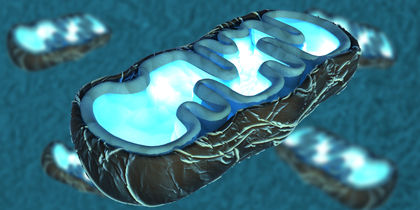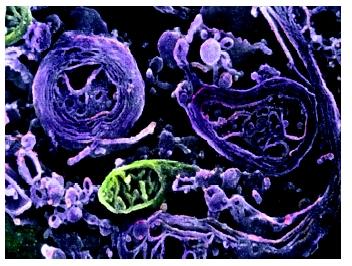Metabolism, Cellular

Cellular metabolism is the sum total of all the biochemical reactions taking place within a cell. It includes all the reactions involved in degrading food molecules, in synthesizing macromolecules needed by the cell, and in generating small precursor molecules, such as some amino acids , for cellular needs. It also includes all reactions involving electron transfers (oxidationreduction, or redox, reactions). Metabolism takes place in sequences of biochemical reactions called pathways.
Metabolic Pathways
Metabolic pathways can be simple linear sequences of a few reactions, or they can be extensively branched with reactions converging on or diverging from a central main pathway. They can be cyclic, with a precursor of an early reaction regenerated at the end of a pathway (for example, the Krebs cycle of aerobic respiration, or the Calvin cycle of photosynthesis). Some pathways serve multiple purposes. For example, the Krebs cycle is best known for its role in oxidizing sugars and other organic molecules to provide adenosine triphosphate ( ATP ) for the cell, but it is also used as a source of precursor molecules for cellular biosynthesis. Clearly, evolution has repeatedly used existing metabolic pathways to provide novel functions.
All biochemical reactions are catalyzed by proteins called enzymes ; for most reactions, there is one enzyme that catalyzes only that reaction. Enzymes can be exquisitely regulated by the cell, providing a high degree of control of cellular metabolism. The activity of enzymes is often sensitive to the amount of specific molecules in the cell. For example, enzymes involved in producing ATP are often inhibited by ATP; when the cell has sufficient amounts of this metabolite , therefore, the pathways that produce it are turned off, thereby preventing wasteful reactions. Alternatively, these same enzymes may be strongly activated by ATP's precursor, adenosine diphosphate ( ADP ), levels of which become elevated when the cell is doing work and needs rapid generation of ATP. This pattern of regulation by molecules that are either precursors of or products of a pathway is common in cellular metabolism.
Anabolism and Catabolism
Metabolism is divided into two broad categories. Catabolism, or the degradation of molecules, usually involves removing electrons from molecules (oxidation) and is generally accompanied by the release of energy. Anabolism, or the synthesis of complex molecules, usually involves enriching molecules in electrons (reduction) and generally requires the cell to expend energy in the form of ATP. Reactions that yield energy, such as most catabolic reactions, are called exergonic, whereas those that require an input of energy, such as most anabolic reactions, are called endergonic.
The main function of the anabolic pathways is to synthesize the four classes of macromolecules needed by the cell: polysaccharides , lipids , nucleic acids, and proteins. Although these four categories are chemically distinct, they are all synthesized by the same general type of reaction, condensation synthesis of individual small subunits (monomers) into the macromolecules (polymers). In a condensation reaction, a hydrogen atom is removed from one monomer , and a hydroxyl group from the other, forming water. A new bond is formed between the two monomers where the water was removed:
—A—OH + H—A—→H 2 O +—A—A—
For example, nucleic acids such as DNA and RNA are synthesized from their monomers, nucleotides , by condensation synthesis. Polysaccharides and proteins are produced in a similar fashion from their monomers, sugars and amino acids, respectively. Lipids, the fourth class of macromolecule, are somewhat different. Unlike the other macromolecules, which are

The reverse of condensation synthesis is hydrolysis , in which a water molecule is added to a bond between two monomers, breaking it and separating the monomers. One of the hydrogens from water becomes attached to one of the monomers, and the hydroxyl that remains is attached to the other:
H 2 O +—A—A—→—A—OH + H—A—
For example, nucleic acids are degraded to their monomers when water is inserted between the individual nucleotide monomers, breaking the bond that joins them. Hydrolysis reactions are a type of catabolic reaction, although they do not usually directly produce ATP; they do, however, produce monomers that often are further catabolized to generate ATP.
Turnover
Metabolism is a dynamic process. The cell is continuously degrading and synthesizing molecules. In general, the catabolic pathways are providing energy in the form of ATP that is used to drive the anabolic processes. This is necessary since endergonic reactions, in order to proceed, require an input of energy, which they obtain from ATP. This is accomplished by coupling the endergonic reaction to the hydrolysis of ATP to ADP and inorganic phosphate, an exergonic reaction. As long as the amount of energy required is less than the amount released by ATP hydrolysis, the coupled reactions will proceed.
The dynamic nature of metabolism results in constant degrading and rebuilding of most cellular materials. For example, proteins exist in a cell for relatively brief times, ranging from minutes to weeks, with most proteins having average life spans of a few days. Structural proteins generally last longer than enzymes, but they too are eventually degraded and synthesized anew. Likewise, other cellular materials are turned over in a similar fashion. This constant turnover of cellular materials keeps the cell in good condition. Molecules that may have been damaged by, for example, being partially oxidized, will sooner or later be degraded and replaced.
Cellular metabolism is the most fundamental level where the dynamic properties of life begin to appear. The complex interactions of diverse pathways, their regulation, and their organization demonstrate the exquisite refinement of the biochemistry of life. All processes that occur within individual organisms can be traced to the pathways of cellular metabolism.
SEE ALSO Carbohydrates ; Control Mechanisms ; Enzymes ; Glycolysis and Fermentation ; Krebs Cycle ; Lipids ; Nucleotides ; Protein Structure
David W. Tapley
Bibliography
Hinckle, P. C., and R. E. McCarthy. "How Cells Make ATP." Scientific American 238 (March 1978): 104–123.
Stryer, Lubert. Biochemistry. New York: W. H. Freeman and Company, 1995.
Comment about this article, ask questions, or add new information about this topic: